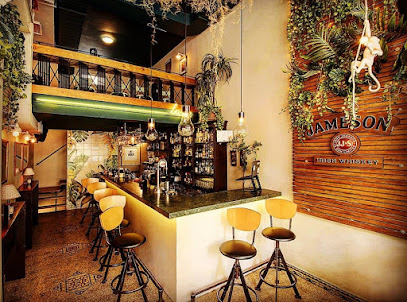
Theatre of Dionysus: The Birthplace of Greek Drama
Discover the Theatre of Dionysus in Athens, the cradle of Greek drama and a UNESCO World Heritage site, where history and culture come alive.
The Theatre of Dionysus in Athens is a must-visit historical landmark, renowned as the birthplace of Greek drama. This ancient site, nestled on the southern slope of the Acropolis, offers tourists a unique glimpse into the origins of theater, where legendary plays were first performed in honor of the god Dionysus. With its impressive ruins and scenic views, it serves as a profound reminder of Greece's rich cultural heritage.
A brief summary to Theatre of Dionysus
- Mitseon 25, Athens, 117 42, GR
- +302103224625
- Visit website
- Monday 8 am-5 pm
- Tuesday 8 am-5 pm
- Wednesday 8 am-5 pm
- Thursday 8 am-5 pm
- Friday 8 am-5 pm
- Saturday 8 am-5 pm
- Sunday 8 am-5 pm
Local tips
- Visit early in the morning to avoid crowds and enjoy a serene atmosphere.
- Wear comfortable shoes, as the terrain can be uneven.
- Bring a camera to capture the stunning views of the Acropolis.
- Check for any performances or events that might be happening during your visit.
Getting There
-
Walking
If you are starting from Syntagma Square, head towards Vasilissis Sofias Avenue. Walk down this avenue until you reach the intersection with Amalias Avenue. Turn left onto Amalias Avenue and continue walking until you reach the National Garden on your right. Enter the garden and follow the paths that lead you through it. Exit the garden at the southern end and you will find yourself at the foot of the Acropolis. From here, walk towards the Acropolis Museum, which is located at Dionysiou Areopagitou Street. After passing the museum, continue along the same street, and you will see the Theatre of Dionysus entrance on your left.
-
Metro
From Monastiraki Metro Station (Line 1 or 3), take the train towards Kifisia or Doukissis Plakentias. Get off at the Acropolis station (just two stops). Exit the station and head towards the Acropolis. Once you reach the entrance of the Acropolis, follow the signs directing you to the Theatre of Dionysus, located on the southern slope of the Acropolis Hill.
-
Bus
Take bus number 550 from Omonoia Square towards Vasilika. Get off at the stop called 'Akropolis'. From the bus stop, walk towards the Acropolis Museum. Once you reach the museum, turn left and walk along Dionysiou Areopagitou Street. The Theatre of Dionysus will be on your left side after a short walk.
Discover more about Theatre of Dionysus
Iconic landmarks you can’t miss
Temple of Themis
0.2 km
Discover the Temple of Themis in Athens, an ancient monument symbolizing justice and the rich history of Greece, perfect for culture enthusiasts and explorers.

Greek Flag of Athens Acropolis
0.2 km
Experience the breathtaking views of Athens and delve into Greek history at the iconic Greek Flag of the Acropolis, a must-see observation deck.

Roman Stoa
0.3 km
Discover the Roman Stoa, a historical landmark in Athens, where ancient architecture meets serene beauty, steeped in rich culture and history.
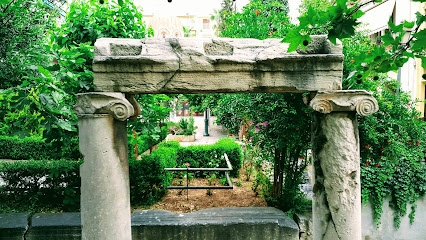
Monument of Agrippa
0.3 km
Explore the Monument of Agrippa, a stunning historical landmark in Athens showcasing ancient architectural brilliance and rich cultural heritage.
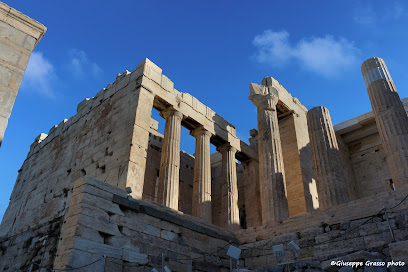
Beulé Gate
0.3 km
Explore the Beulé Gate, a stunning historical landmark in Athens, and step into the grandeur of Ancient Greek civilization.
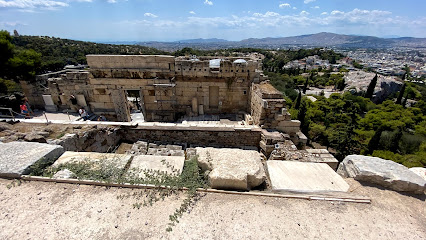
Paved Court of Klepsydra
0.3 km
Explore the Paved Court of Klepsydra, an iconic historical landmark in Athens where ancient ingenuity meets modern vibrancy.
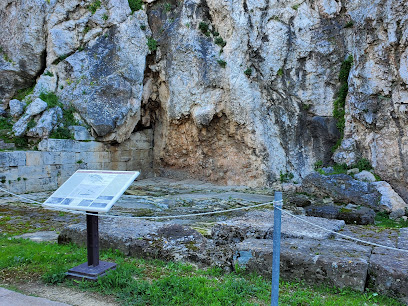
Melina Mercouri Monument
0.3 km
Discover the Melina Mercouri Monument in Athens, a stunning sculpture celebrating the legacy of a beloved Greek actress and cultural icon amidst beautiful gardens.
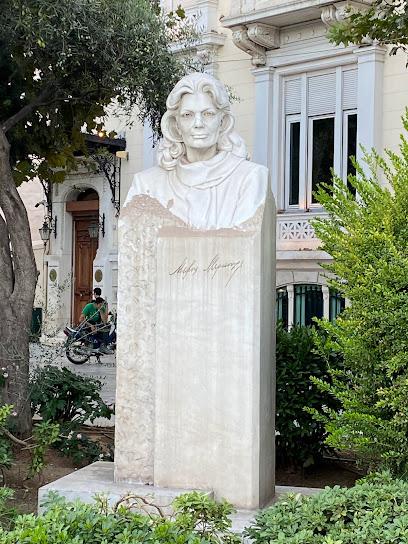
Las escaleras de Mnisikleous
0.3 km
Explore the captivating Mnisikleous stairs in Athens, a hidden gem filled with charming cafes and vibrant street life, perfect for leisurely exploration.

Divani Palace Acropolis
0.4 km
Experience the luxury of Divani Palace Acropolis, where timeless elegance meets modern comfort in the heart of Athens' historical treasures.
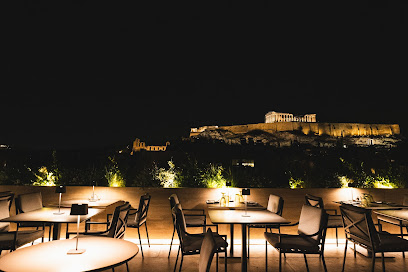
Arch of Hadrian
0.4 km
Discover the Arch of Hadrian, a stunning symbol of ancient Athens that connects history with the vibrant culture of modern Greece.
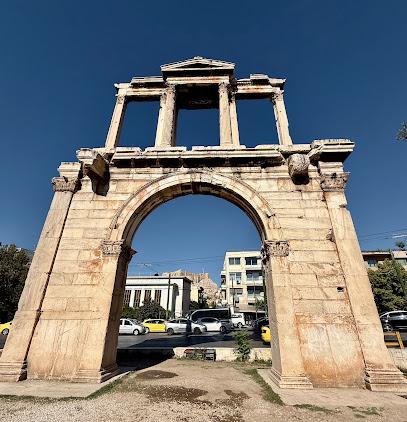
Old Olive Tree
0.4 km
Discover the Old Olive Tree in Athens, a historical landmark that symbolizes resilience and embodies the rich cultural heritage of Greece.

Plaka little Monk
0.4 km
Explore the serene beauty and cultural richness of Plaka Little Monk in Athens, where history meets modernity in a picturesque setting.
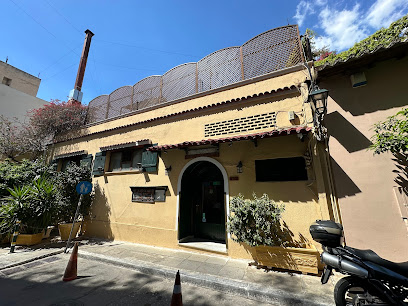
Plate with Apostle Paul's Sermon
0.4 km
Explore the Plate with Apostle Paul's Sermon in Athens, a captivating sculpture honoring a pivotal moment in Christian history amidst rich cultural heritage.
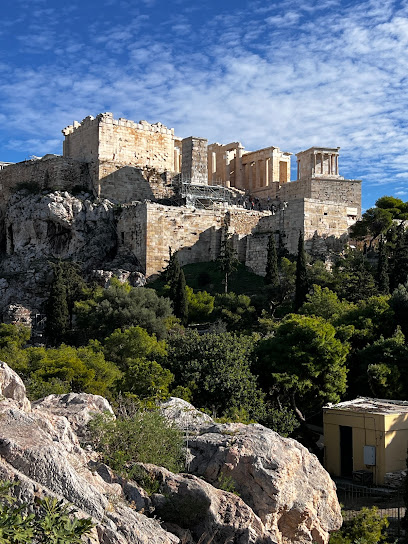
Horologion of Andronikos Cyrrhestes
0.4 km
Explore the Horologion of Andronikos Cyrrhestes, a historical landmark in Athens that showcases ancient Greek architectural brilliance and the art of timekeeping.
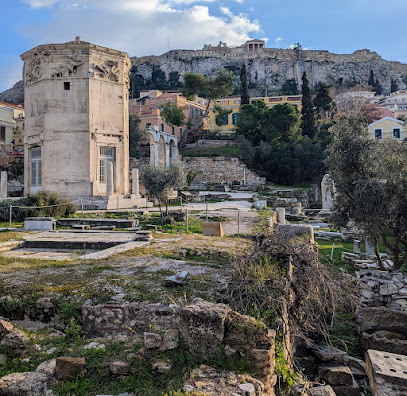
Benizelos Mansion
0.4 km
Discover the architectural splendor and historical significance of the Benizelos Mansion, a must-visit landmark in the heart of Athens, Greece.
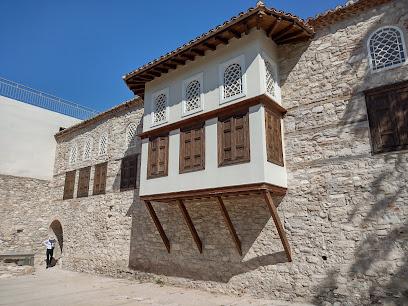
Unmissable attractions to see
Sanctuary of Dionysus
0.1 km
Discover the Sanctuary of Dionysus, an ancient historical landmark in Athens that reveals the origins of Greek theater and showcases stunning architectural beauty.
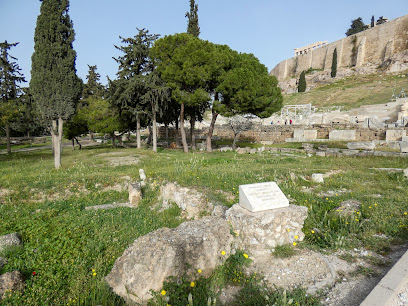
Temple of Asklepios
0.1 km
Explore the Temple of Asklepios, an ancient healing sanctuary in Athens that offers a glimpse into the rich history of Greek medicine and culture.
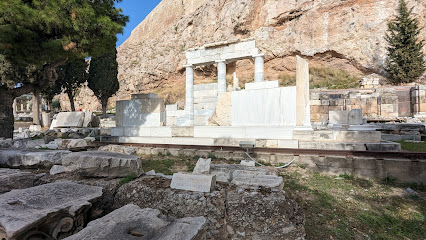
Old Acropolis Museum
0.1 km
Explore the Old Acropolis Museum in Athens — a treasure trove of ancient Greek art and history, showcasing the wonders of the past amidst stunning architecture.
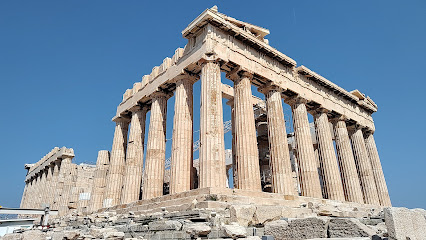
South Slope of the Acropolis of Athens
0.1 km
Discover the rich history and breathtaking views at the South Slope of the Acropolis in Athens, where ancient ruins meet stunning landscapes.
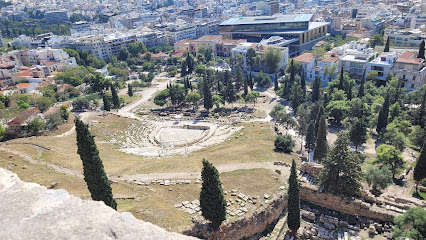
Temple of Rome & Augustus
0.2 km
Explore the Temple of Rome & Augustus in Athens, a stunning historical landmark that embodies the rich cultural heritage and architectural brilliance of ancient Greece.

Stoa of Eumenes ΙΙ
0.2 km
Explore the Stoa of Eumenes in Athens, a historical landmark that reveals the rich architectural and philosophical legacy of ancient Greece.
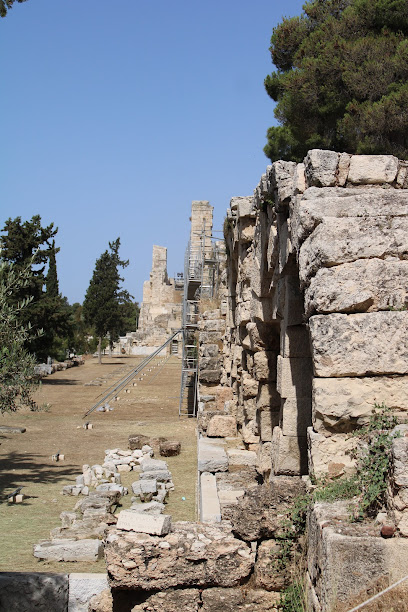
Byzantine Cistern
0.2 km
Explore the Byzantine Cistern in Athens: a captivating historical landmark revealing the city's rich past and architectural marvels.
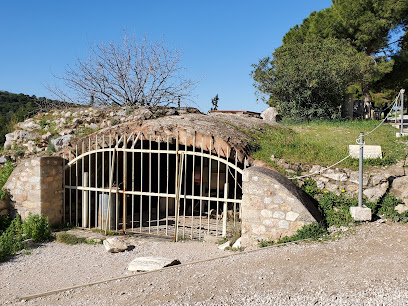
Ilias Lalaounis Jewelry Museum
0.2 km
Explore the exquisite Ilias Lalaounis Jewelry Museum in Athens, a celebration of craftsmanship from ancient to contemporary jewelry design.
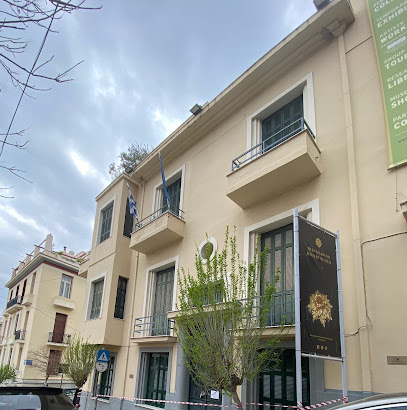
Parthenon
0.2 km
Discover the Parthenon: A magnificent symbol of Ancient Greece, offering breathtaking views and rich historical insights atop the Acropolis in Athens.
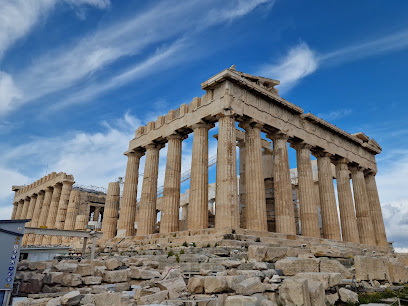
Tourist Information Center Athens
0.2 km
Discover Athens with ease at the Tourist Information Center, your essential hub for travel resources, maps, and local insights to enhance your visit.
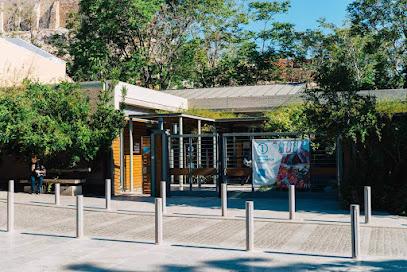
Sanctuary of Zeus Polieus
0.2 km
Explore the Sanctuary of Zeus Polieus in Athens, a historical landmark that embodies the ancient glory of Greek civilization with breathtaking ruins and rich cultural significance.
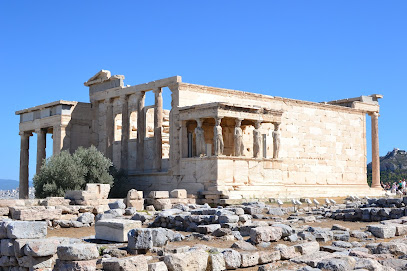
Acropolis Research Center
0.2 km
Discover the Acropolis Research Center in Athens: where ancient history, archaeology, and modern research converge in a captivating museum experience.
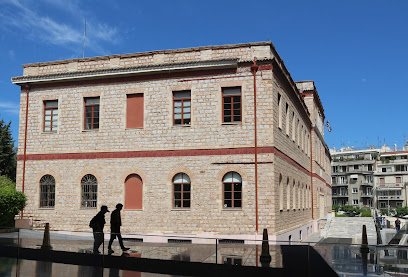
Holy Church of Saint George of the Rock
0.2 km
Experience the serene beauty of the Holy Church of Saint George of the Rock, a stunning Greek Orthodox church in the heart of Athens.
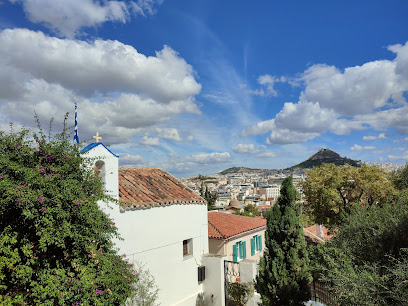
Choragic Monument of Lysicrates
0.2 km
Explore the Choragic Monument of Lysicrates, a stunning example of ancient Greek architecture and cultural heritage in the heart of Athens.
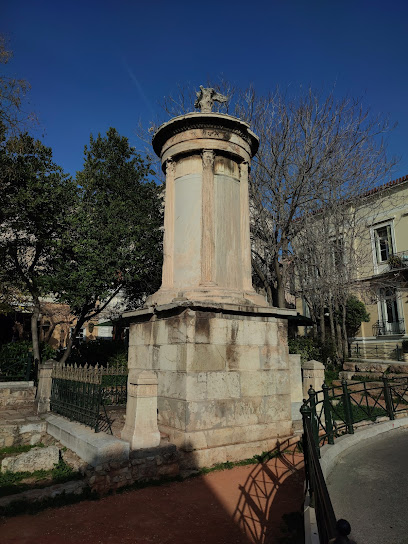
Chalkotheke
0.2 km
Explore the rich history of Athens at Chalkotheke, a remarkable archaeological site that reveals the ancient city's profound cultural significance.
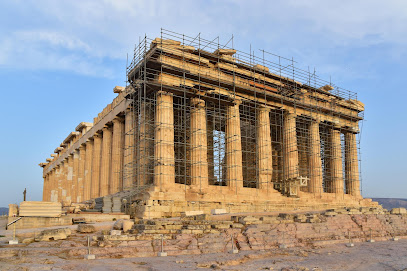
Essential places to dine
Daphne's Restaurant
0.2 km
Experience authentic Greek cuisine at Daphne's Restaurant in Athens - where every dish tells a story.
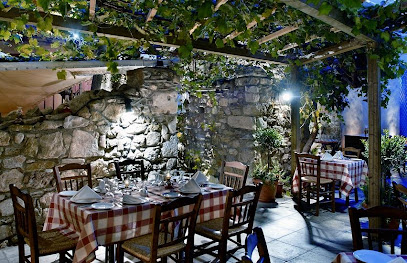
Restaurant Scholarhio
0.3 km
Experience the heart of Greece through exceptional flavors at Restaurant Scholarhio in Athens.
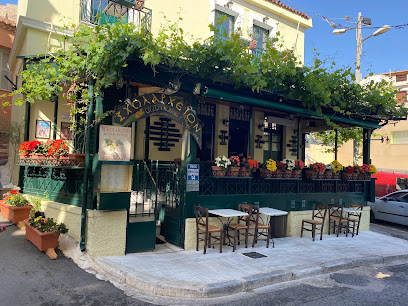
LIONDI Traditional Greek Restaurant
0.3 km
Experience authentic Greek cuisine at LIONDI Traditional Greek Restaurant in Athens, where every dish tells a story of tradition and flavor.
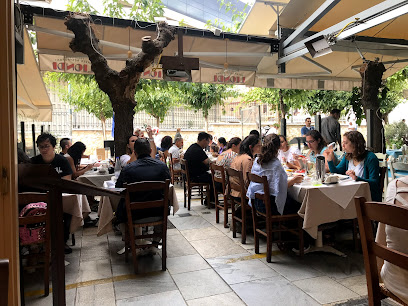
Kosmikon
0.3 km
Savor authentic Greek flavors at Kosmikon – a culinary gem in Athens showcasing Mediterranean delights.
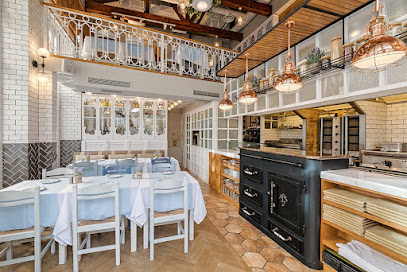
Arcadia Restaurant
0.3 km
Savor the true flavors of Greece at Arcadia Restaurant – your destination for authentic Mediterranean dining in Athens.

SENSE Rooftop Restaurant
0.3 km
Experience fine dining with stunning views at SENSE Rooftop Restaurant in Athens—where culinary excellence meets breathtaking scenery.
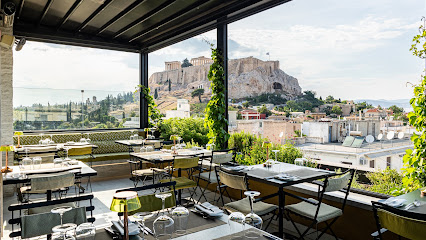
Xenious Zeus
0.3 km
Discover the rich flavors of Greece at Xenious Zeus, where authentic cuisine meets warm hospitality in the heart of Athens.
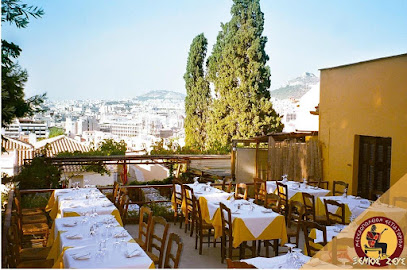
To Kafeneio
0.3 km
Experience authentic Greek cuisine at To Kafeneio - where tradition meets flavor in the heart of Athens.
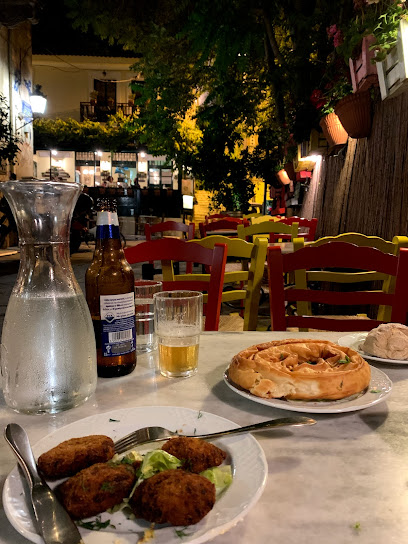
To Kati Allo
0.3 km
Experience authentic Greek flavors at To Kati Allo in Athens – where tradition meets taste in every delightful dish.
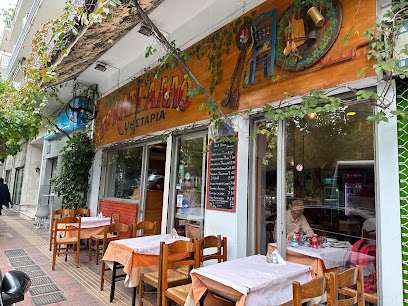
Trattoria
0.3 km
Experience authentic Greek cuisine at Trattoria in Athens - where tradition meets flavor in every dish.
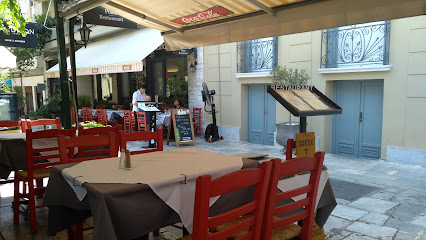
Strofi Athenian Restaurant
0.3 km
Experience authentic Greek cuisine at Strofi Athenian Restaurant with breathtaking views of the Acropolis in Athens.
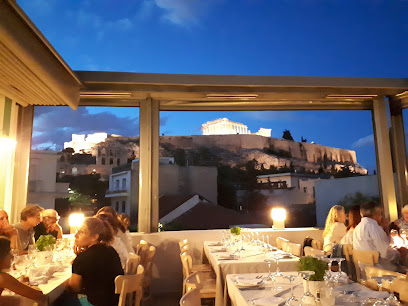
Geros Tou Moria Restaurant
0.3 km
Discover authentic Greek cuisine at Geros Tou Moria Restaurant in Athens - where tradition meets taste in every dish.
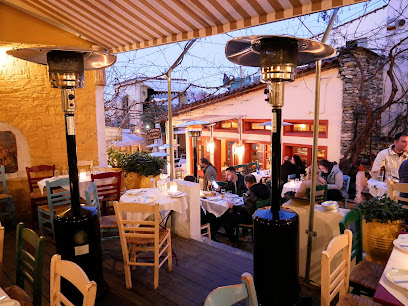
Anafiotika Cafe - Restaurant
0.3 km
Experience authentic Greek cuisine and breathtaking views at Anafiotika Cafe - your serene escape in the heart of Athens.
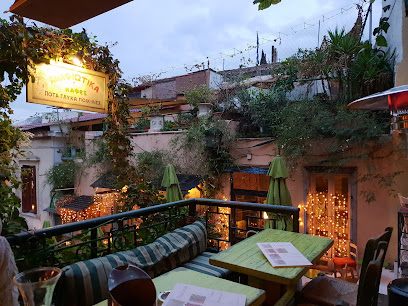
Taverna Vyzantino
0.4 km
Discover authentic Greek flavors at Taverna Vyzantino in Athens – where tradition meets taste in every dish.
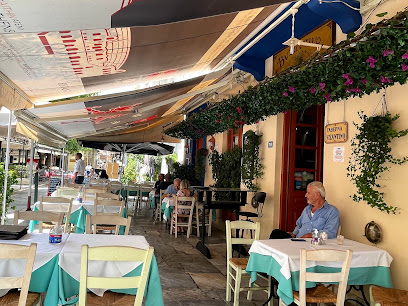
Klepsydra
0.4 km
Discover authentic Greek flavors at Klepsydra in Athens - where tradition meets modern culinary excellence.
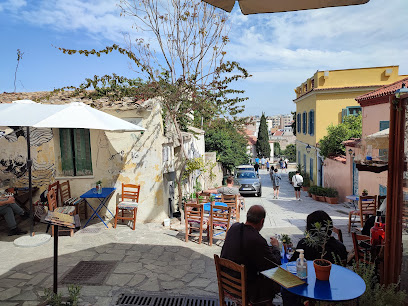
Markets, malls and hidden boutiques
Gallery Demeter
0.2 km
Explore Gallery Demeter in Athens for unique souvenirs that embody Greek culture and artistry, perfect for every traveler seeking authentic keepsakes.
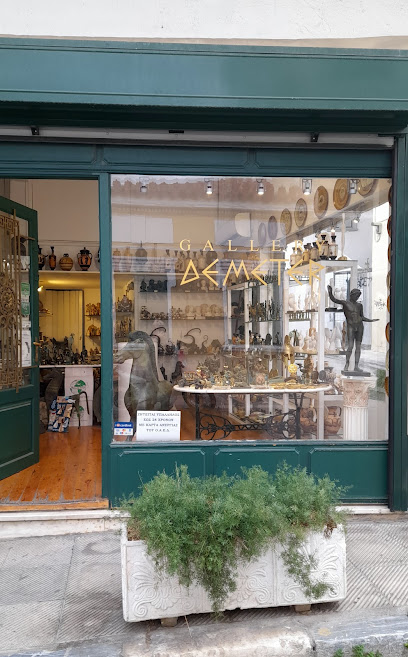
NOSTALGIA GIFT SHOP
0.2 km
Discover unique souvenirs and artistic handicrafts at Nostalgia Gift Shop in Athens, where every item tells a story of Greece's rich heritage.

Roy's Shop - Greek Art & Souvenirs
0.2 km
Explore Roy's Shop in Athens for unique Greek art and souvenirs that embody the spirit of Greece, perfect for travelers seeking authentic keepsakes.
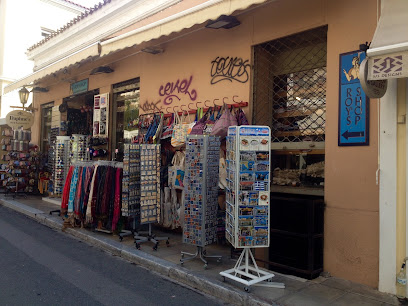
anastasia memories from athens
0.2 km
Discover unique Greek souvenirs at Anastasia Memories in Athens, where every item tells a story and enriches your travel experience.
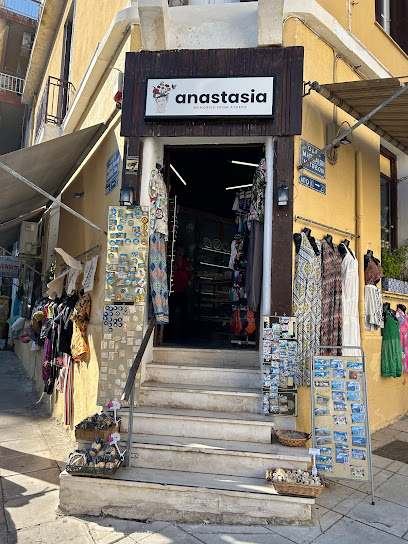
Hydra Gallery - Athens Greece
0.2 km
Immerse yourself in the vibrant contemporary art scene at Hydra Gallery in Athens, Greece - a haven for art lovers and cultural enthusiasts.
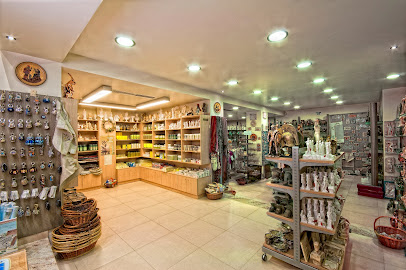
Leather Shop
0.2 km
Explore the Leather Shop in Athens for unique, handcrafted leather goods that embody Greek craftsmanship and culture.
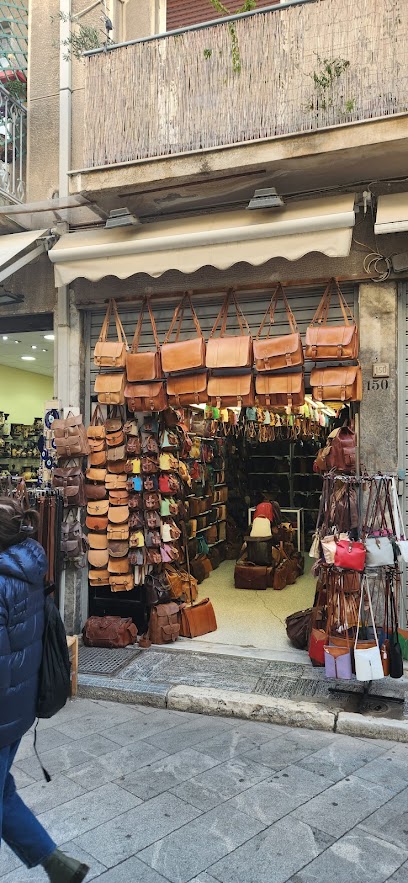
Potpourri Concept Store
0.3 km
Explore the Potpourri Concept Store in Athens for unique fashion accessories, perfumes, and creative supplies in a charming atmosphere.
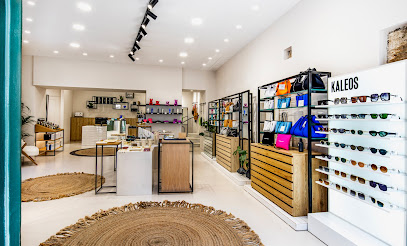
From Greece With Love Souvenirs
0.3 km
Discover authentic Greek souvenirs and clothing at From Greece With Love Souvenirs in Athens, a must-visit for cultural treasures.

Kirki's Eye
0.3 km
Explore Kirki's Eye, Athens' boutique clothing store, blending Greek tradition with modern style for a unique shopping experience.

Museum Shop
0.3 km
Explore a treasure trove of unique souvenirs and cultural artifacts at the Museum Shop in Athens, reflecting the rich heritage of Greece.
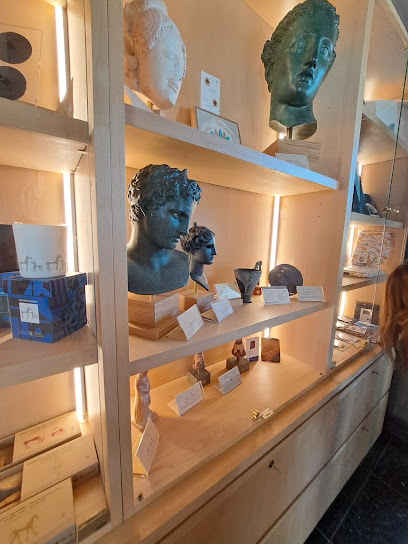
Hercules Shop
0.3 km
Explore Hercules Shop in Athens for unique souvenirs, local crafts, and authentic Greek treasures that embody the rich culture of Greece.
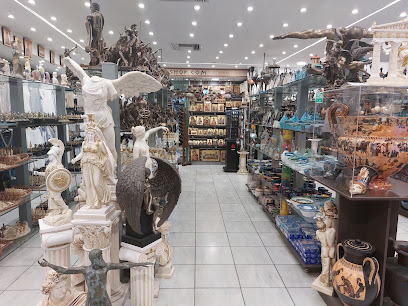
The Greek Shop
0.3 km
Discover the authentic flavors and beauty of Greece at The Greek Shop in Athens, your ultimate stop for local groceries and cosmetics.
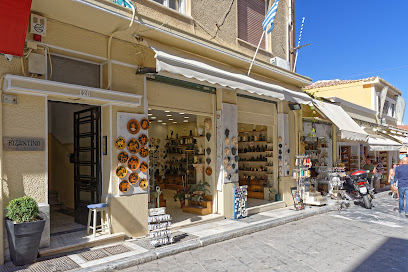
Thiki Greece
0.4 km
Discover authentic Greek souvenirs at Thiki Greece, where local culture and craftsmanship come together in the heart of Athens.
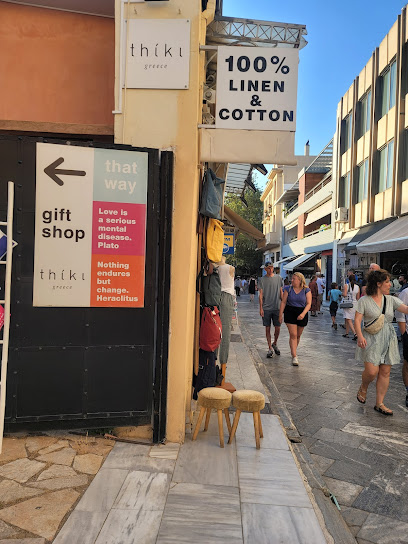
Flâneur Souvenirs & Supplies
0.4 km
Discover authentic Greek treasures at Flâneur Souvenirs & Supplies, where unique gifts and local crafts await in the heart of Athens.
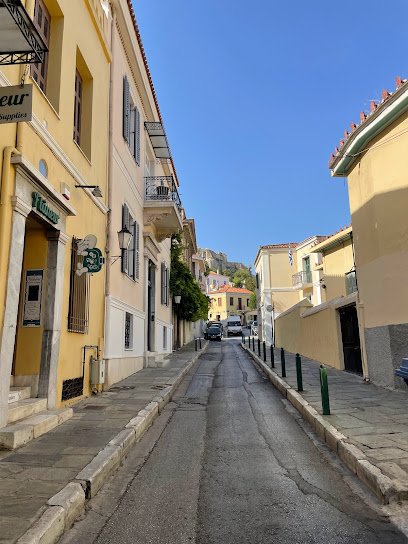
Emporion Gift Shop Plaka
0.4 km
Shop unique souvenirs and crafts at Emporion Gift Shop Plaka, where Greek culture comes alive in every delightful piece.
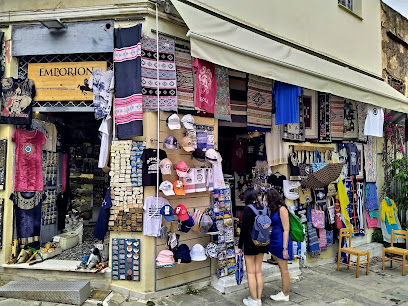
Essential bars & hidden hideouts
Plaka street
0.2 km
Discover the charm of Plaka Street, where vibrant bars meet historic Athenian culture, offering an unforgettable experience in the heart of Greece.
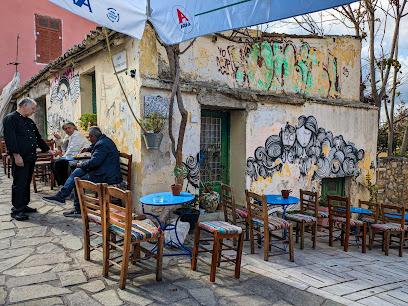
Jackass Penguin Gallery and Cocktail Bar
0.2 km
Discover the unique flavors of Greece at Jackass Penguin Gallery and Cocktail Bar, where culinary excellence meets vibrant local art.
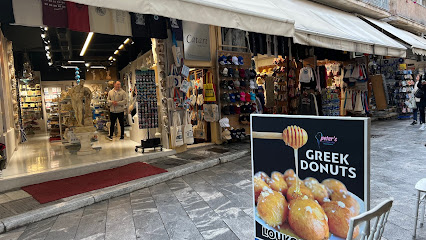
Brettos bar
0.3 km
Experience the rich tradition of Greek spirits at Brettos Bar in Plaka, Athens—where history and vibrant nightlife converge.
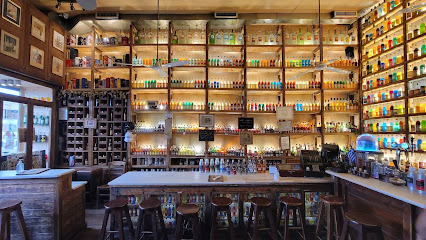
Licores
0.3 km
Experience the lively atmosphere and unique cocktails at Licores, one of Athens' top bars for nightlife and relaxation.

Athens Sports Bar
0.4 km
Athens Sports Bar: Your go-to destination for sports, karaoke, and a lively atmosphere in the heart of Athens.
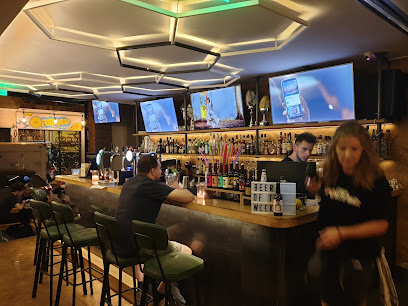
All Day Bar
0.4 km
Experience the vibrant nightlife of Athens at All Day Bar, where adult entertainment and a lively atmosphere come together for an unforgettable night.
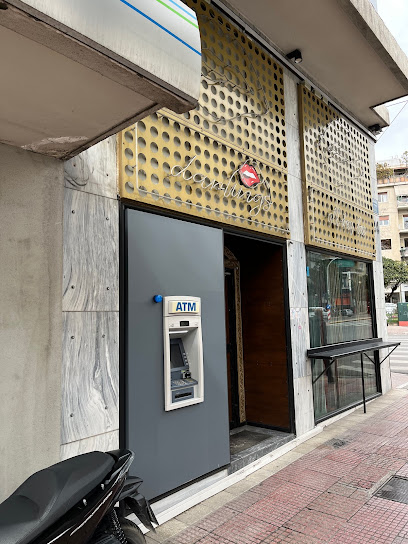
Tiki Bar Athens
0.4 km
Experience the vibrant atmosphere of Tiki Bar Athens, where tropical vibes and refreshing cocktails await in the heart of the city.
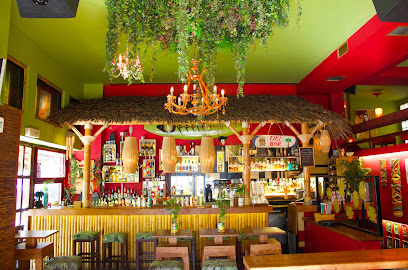
CHANDELIER
0.5 km
Discover the authentic flavors of Greece at Chandelier, a top grill restaurant in Athens, offering a vibrant atmosphere and mouthwatering dishes.
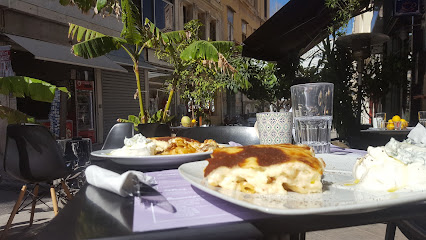
Ipitou The Bar
0.6 km
Discover the lively Ipitou The Bar in Athens, where craft beers and creative cocktails meet a vibrant atmosphere for unforgettable nights.
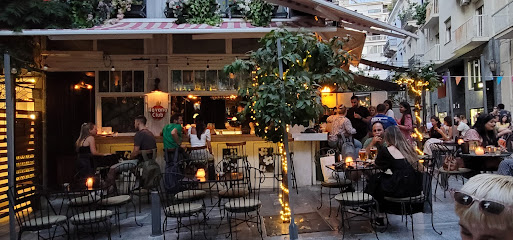
Drunky Goat
0.6 km
Experience the best of Athens' wine culture at Drunky Goat, where exquisite wines meet delicious tapas in a cozy atmosphere.
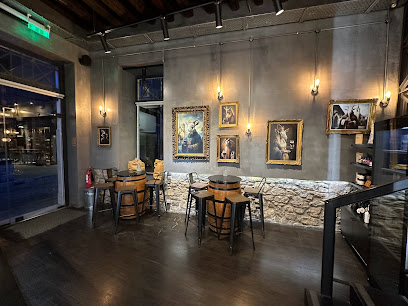
Thea Terrace
0.6 km
Discover the charm of Athens at Thea Terrace, where stunning views and delightful drinks create the perfect atmosphere for relaxation.
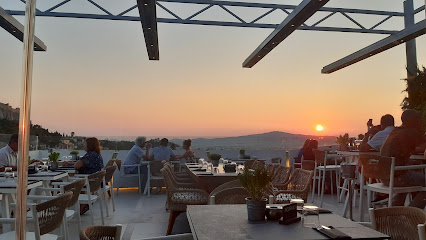
Kiki de grèce
0.6 km
Discover the essence of Greek viticulture at Kiki de Grèce, a must-visit wine bar in the heart of Athens.
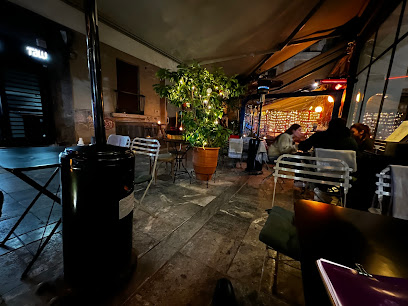
Warehouse CO2
0.6 km
Experience the Finest Wines and Gourmet Delights at Warehouse CO2, Athens' Premier Wine Bar and Deli Offering a Cozy Atmosphere.
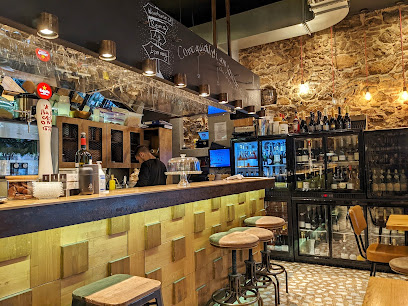
Blue Bird
0.6 km
Experience the vibrant nightlife at Blue Bird, Athens' premier bar for cocktails, music, and unforgettable moments.
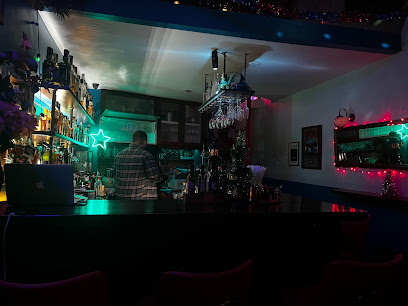
Loser Bar
0.6 km
Experience the vibrant nightlife of Athens at Loser Bar, where expertly crafted cocktails meet a lively atmosphere and unforgettable vibes.
